Greco-Roman Mythology Midterm
1/30
There's no tags or description
Looks like no tags are added yet.
Name | Mastery | Learn | Test | Matching | Spaced |
|---|
No study sessions yet.
31 Terms
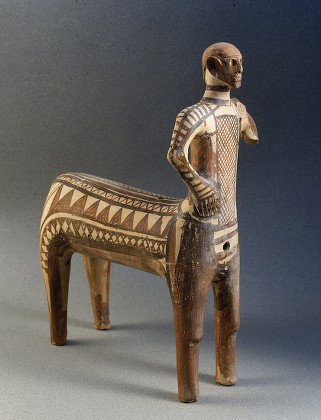
Lefkandi: Terracotta centaur, Greek, c. 900 BCE
-earliest surviving Greek mythological figure
-was purposely broken (partially buried with child and partially buried with Shaman)
-both hand and wheel scultped
-missing phallus, missing in-laid eyes, broken off arms (likely holding tree branch)
-6 fingered centaur, gash in knee
Karon (identified 6 fingered centaur in mythology, also had a wound within his knee from Herakles (gives up immortality to rid himself of the pain from Herakles’ poison arrow)
-Geometric patterns: often seen on ceramics at the time (popular in artistic culture)
could also represent bod art (tattoos)
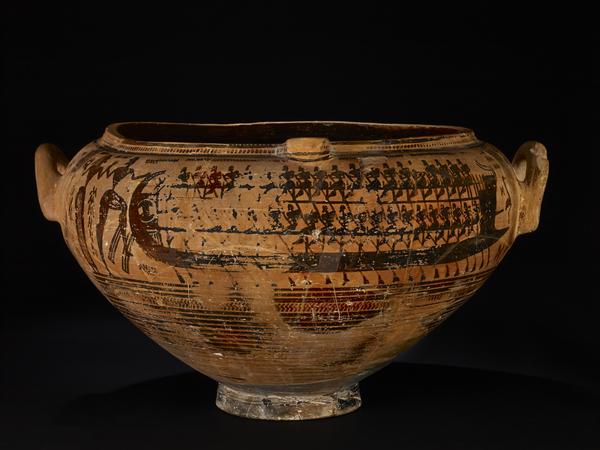
Louterion with ship scene, Greek, c. 735 BCE
-used for bathing
-many people rowing, besides a man and woman
grabbing the wrist of the woman as a sign of “ownership/marriage”
-woman holding wreath (?) in hand, common in Greek marriage
could be Ariadne and Theseus because of small circles around the ringlet in the woman’s hand
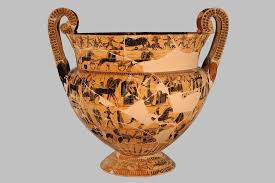
Kleitias and Ergotimos: The Francois Vase, Greek, c. 570 BCE
-two feet in height
-scattered throughout cemetery
-imported to Central Italy from Greece
-vase painting technique (black figure vase painting)
black = painted (glaze), turns black during firing
details were scratched into vases
other colors of clay would be used for additional colors within painting
-most complex Greek vase that survives
-signed by both potter and painter
team on many vases
-special commission, many myths and stories depicted
selected stories have commonalities, majority revolve around Achillies
Theseus is also here (Athenian Hero)
-function: krater-style vase, big bowl used for communal “punch”, wine was drunk (mixed with water and other flavors)
used at the famous drinking parties called the “Symposium”, could be civilized or keggers
free men were attendees and the only women in attendance were paid to be there as entertainment
Etruscan women were allowed to attend the Etruscan symposia
-Eight narratives, 200 figures (labeled)
wedding procession between Achilles parents (Peleus and Thetis), forced marriage because of prophecy that her offspring will be greater than his father, events of the wedding eventually led to the Trojan War
many gods and mythological figures attend the wedding
handle (interior) features the Gorgon, (exterior features Artemis
-Hunt for the Calydonian Boar: all the great heroes come to hunt the boar (inc. Peleus), Adalanta was the only woman fighting alongside men
-Funeral Games of Patroklos: (story that has been passed through oral rather than written tradition), Patroklos dresses as Achilles in an attempt to boost Achilles’ mood, Trojans see “Achilles” and kill Patroklos
-Alternating men and women holding hands, Theseus out front, Ariadne facing Theseus (tribute sent from King Minos to Crete), Ariadne falls for Thesus and helps him out of the maze (only to be abandoned by him)
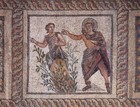
Daphne and Apollo Mosaic from Antioch, Roman, late 3rd century CE
-Apollo smitten with Daphne
-Daphne runs away from Apollo and wishes upon her father to save her, turns her into a Laurel/Bay Tree
tree becomes significant to Apollo
-Apollo has a halo (pagan roots, not Christian)
-Hard to communicate Daphne’s transformation in a freeze-frame
appears that she is hiding in a bush rather than becoming a tree
-Roman’s were avid mosaicists
-Daphne and Apollo were not depicted until the 1st century in Rome
the transformation is always shown in singular depictions of their story

Agrigento Painter: Attic red-figure hydria - Rescue of Io by Hermes, Greek, c. 470-460 BCE
-sacrificial altar (tiny column like structure
-Io is a priestess of Hera
-Argos is covered with “100” eyes
good watchman (later depiction)
Hera collects the eyes after Argos dies and put them on the peacock tail feathers (sacred bird to Hera)
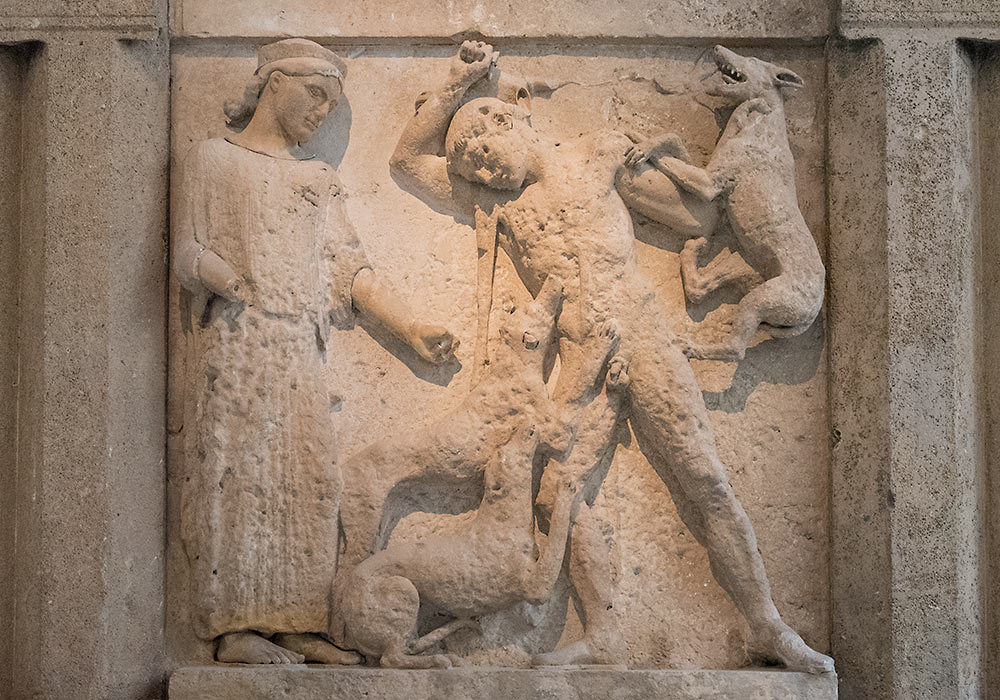
Selinunte, Temple E (Heraion): Metope with Artemis and the punishment of Actaeon, Greek, c. 470-460 BCE
-Artemis watching Actaeon get mauled by dogs
Actaeon wearing deer skin
-carved from local limestone, other than Artemis’ skin which is made of imported marble
-Dogs were not typically used for hunting deer but rather for hunting boar
deer are connected to Artemis
deer are also connected to how women were considered wild animals that needed to be hunted by men (reversing the treatment onto Actaeon)
-Actaeon is always shown in the nude
heroic nudity, elevating/distinguishing people
comes from Greeks training in the nude (athletes)
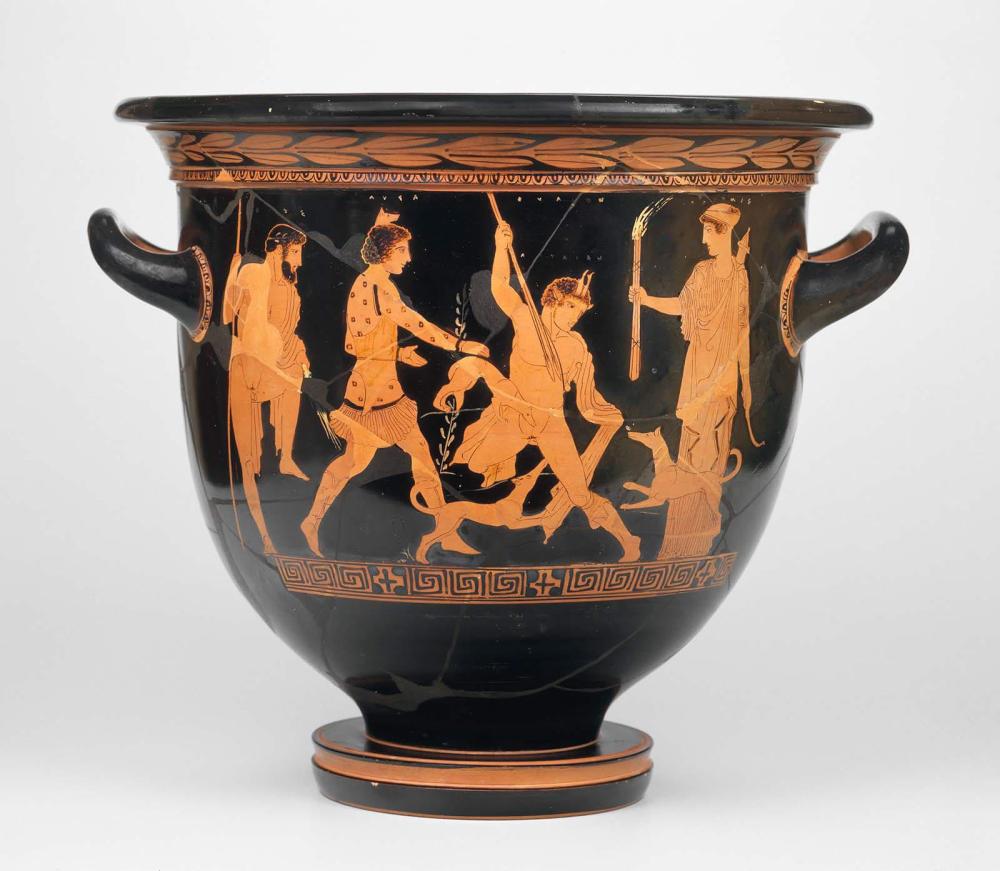
Attic bell-krater attributed to the Lykaon Painter - Death of Actaeon, Greek, c. 440 BCE
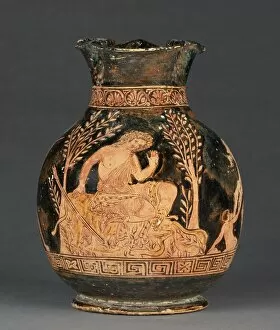
Apulian red-figure oinochoe near the Black Fury Group - Kallisto, Hermes and Arkas, Greek, c. 360 BCE
-Seduced by Apollo, is sexually assaulted by Apollo
becomes pregnant
Artemis transforms Kallisto into a bear (as punishment for becoming pregnant)
transformation scene
hand is transformed into a bear paw and arms are being covered by fur
one breast exposed could either be a reference to motherhood or her sexual assault
-Kallisto (bear) gives birth to her son who is taken from her, he grows up and becomes a hunter that almost kills his mother
-Kallisto is later turned into Ursa Major (Big Dipper) and Arkas (son) is turned into Ursa Minor (Little Dipper)
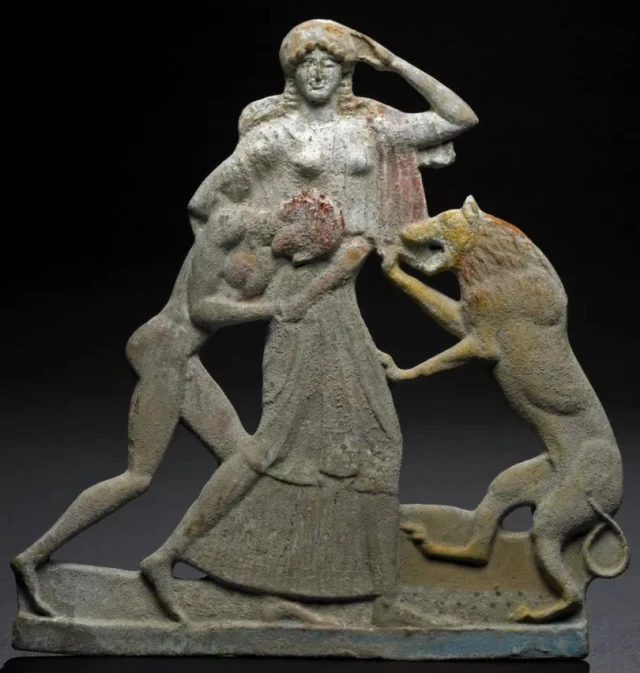
Melian relief with Peleus and Thetis, Greek, c. 490-470 BCE
-Peleus holding Thetis until she gives in and marries him
literally wrestling her until she submits
-Thetis changes herself into dangerous things such as animals and fire in an attempt to free herself from Peleus
-Terracotta plaque made in a mold, fired, then painted with tempera (doesn’t survive)
-Plaque used to decorate wooden items and would be nailed down to a surface (wooden objects do not survive)
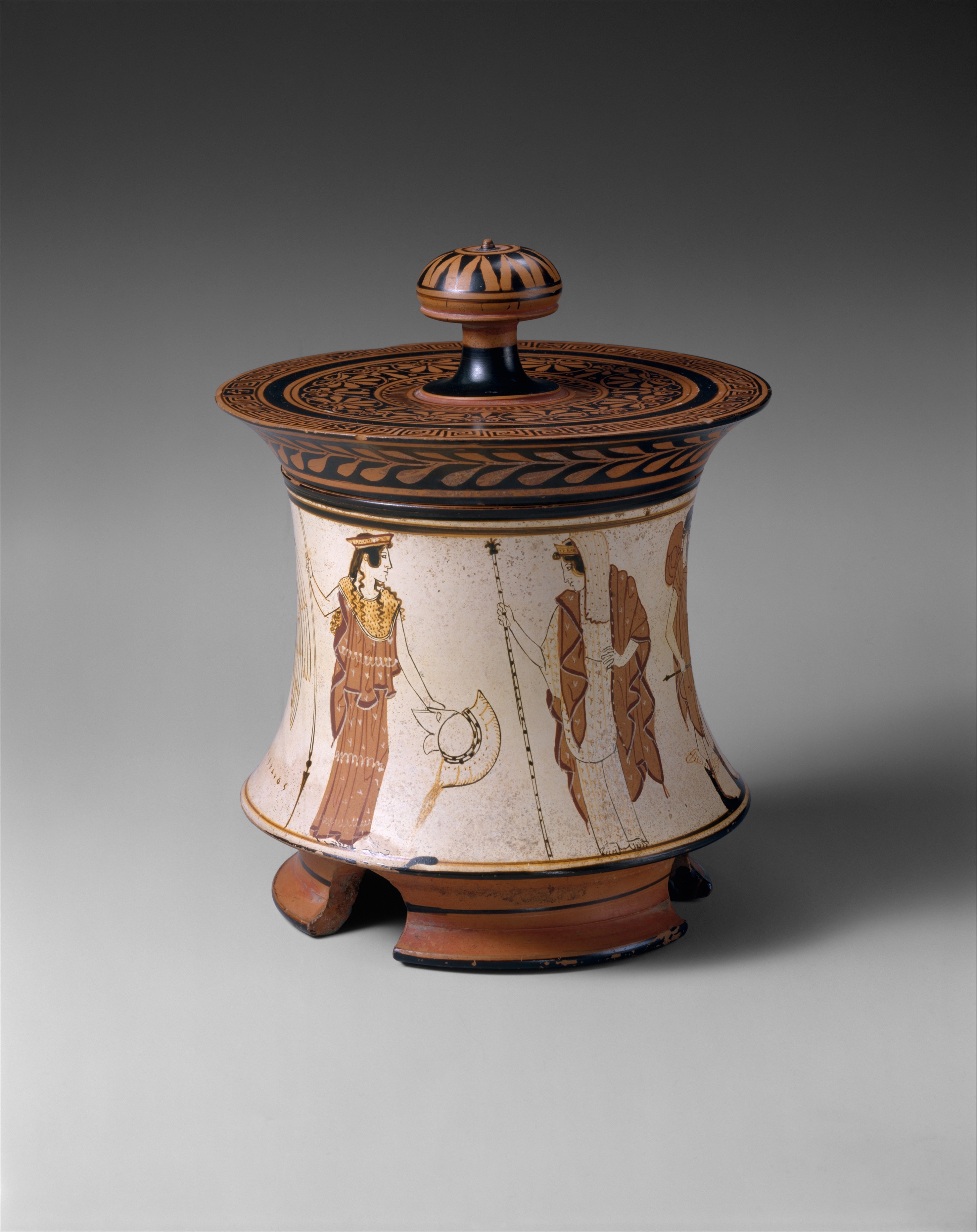
Penthesilea Painter: Attic white-ground pyxis - Judgement of Paris, Greek, c. 465-460 BCE
-Paris depicted as being younger (unlike other depictions where he is shown as an older man)
-Jewelry box, appropriate because of beauty competition
-uses new painting technique (invented around 530 BCE)
calcium carbonate levels are high in the clay that is used (creates light background)
not a durable technique, not popular either
is popular for vases that are not meant to be used (funerary vases, sanctuaries)
-Cupid (Roman) /Eros (Greek)
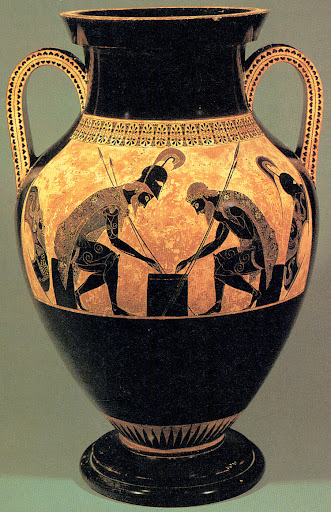
Exekias: Athenian black-figure amphora - Ajax and Achilles playing dice, Greek, c. 540-530 BCE
-unknown origin/record of this exact scene
-extremely detailed microscopic lines
-Ajax was one of Exekias’ favorite subjects
-Achilles appears more dominant in many ways
-Intended to be functional (amphora)
used in funerary purposes

Exekias: Athenian black-figure amphora - The Suicide of Ajax, Greek, c. 540 BCE
-the moment leading up to the Suicide of Ajax
the aftermath of his suicide is more commonly shown
crouched in the fetal position and in the nude showing his vulnerability
-Commits suicide via his own sword
-The armor of Achilles looms over Ajax before his final moment
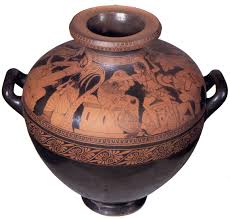
Kleophrades Painter: Athenian red-figure hydria - Iliupersis (Sack of Troy), Greek, c. 490 BCE
-made around the same time as the Greeks are fighting against the Persians
Athenians defeat the Persians (good general)
-10 years after the vase was created the Persians burned Athens
-Empathetic towards the Trojans
-Only three family members survive Troy (warned by Aphrodite)
Romans claim heritage to them
-Assault of Kassandra
clinging to Athena's statue (hopes for Athena to save her)
Kassandra is naked (identifier in sexual assault scenes)
Athena is repulsed by the scene and the statue turns away
-Phallic imagery (using the sword) and pulling hair (rape has been used as a psychological
-Women will be taken captive, men will be slaughtered
women with short hair are servants or in mourning
-Priam (king of Troy) is killed over an altar by Achilles son (variations on how he is killed [either a sword or baby grandson])
-Hector’s wife was fighting Greek soldiers with a pestle (mortar) (only Trojan that fights back)
-Elder woman (Theseus’ Mother) is rescued by her grandkids (captive of Troy for 10 years, was Helen’s nurse)
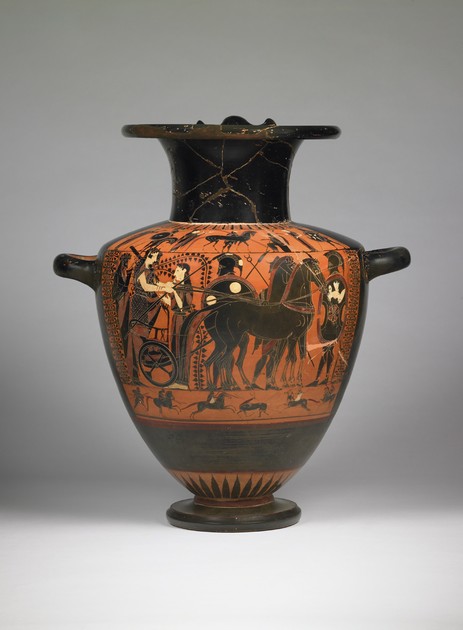
Lysippides Painter: Attic black-figure hydria - Apotheosis of Herakles, Greek, c. 530-520 BCE
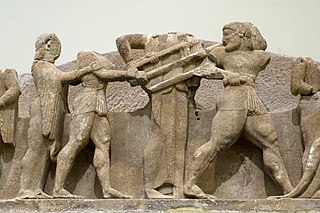
Delphi, Siphnian Treasury: East Pediment - Struggle over the Delphic Tripod, c. 525 BCE
-Herakles goes to atone, finds out he is going to be enslaved as punishment, and attempts to steal the tripod to make his own Oracle
-Struggle between Herakles and Apollo for the tripod
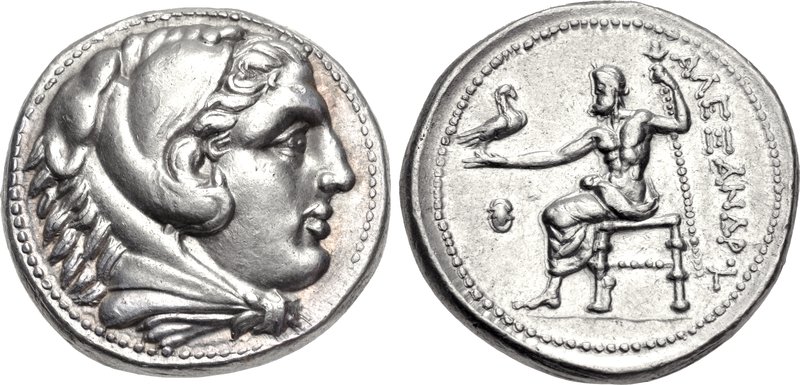
Macedonian silver tetradrachm minted in Pella - Head of Herakles/Seated Olympian Zeus, c. 315-308 BCE
-Dorian version
descendants of Herakles re-settle in Greece
-The Greeks don’t consider the Macedonians Greek people
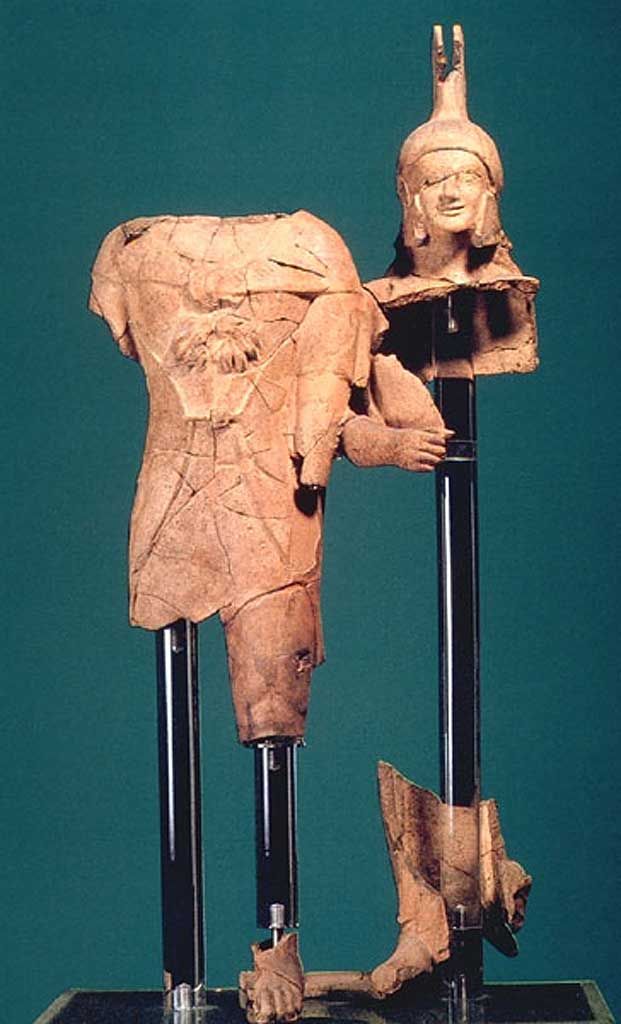
Rome, Sanctuary of Sant’Omobono: Herakles and Athena acroteria, Roman, c. 540-530 BCE
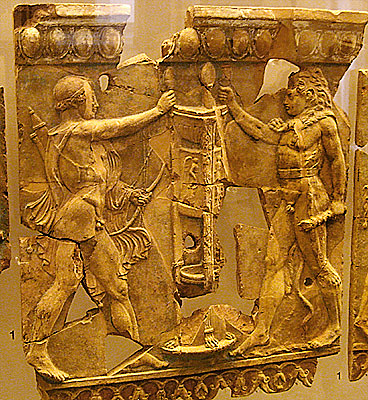
Rome, Temple of Apollo Palatinus: Terracotta plaque with the Struggle for the Delphic Tripod, Roman, c. 28 BCE
-Herakles and Apollo
-Octavian = Augustus
honored by Roman state and is given honorary titles
-Art was used to gain popularity amongst empire (political messaging through myth and art)
-Herakles is meant to represent Mark Antony and Apollo is meant to represent Octavian
mimicking what was happening politically in Rome
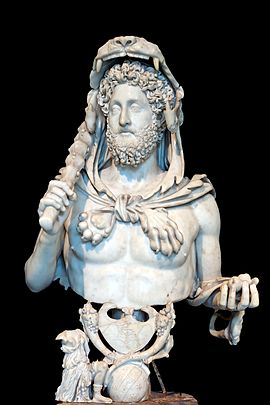
Portrait of Commodus in the guise of Hercules, Roman, c. 191-192 CE
-Poor ruler and got booted from the throne (was also murdered)
co-ruled with his father Markus Aurelius until 181 BCE
-Tried to deify himself during his lifetime (taboo)
proclaims that he is Hercules (or part of his lineage), carries objects relating to Hercules
-Many versions of this image were created but destroyed, this one was likely hidden by a supporter of Commodus
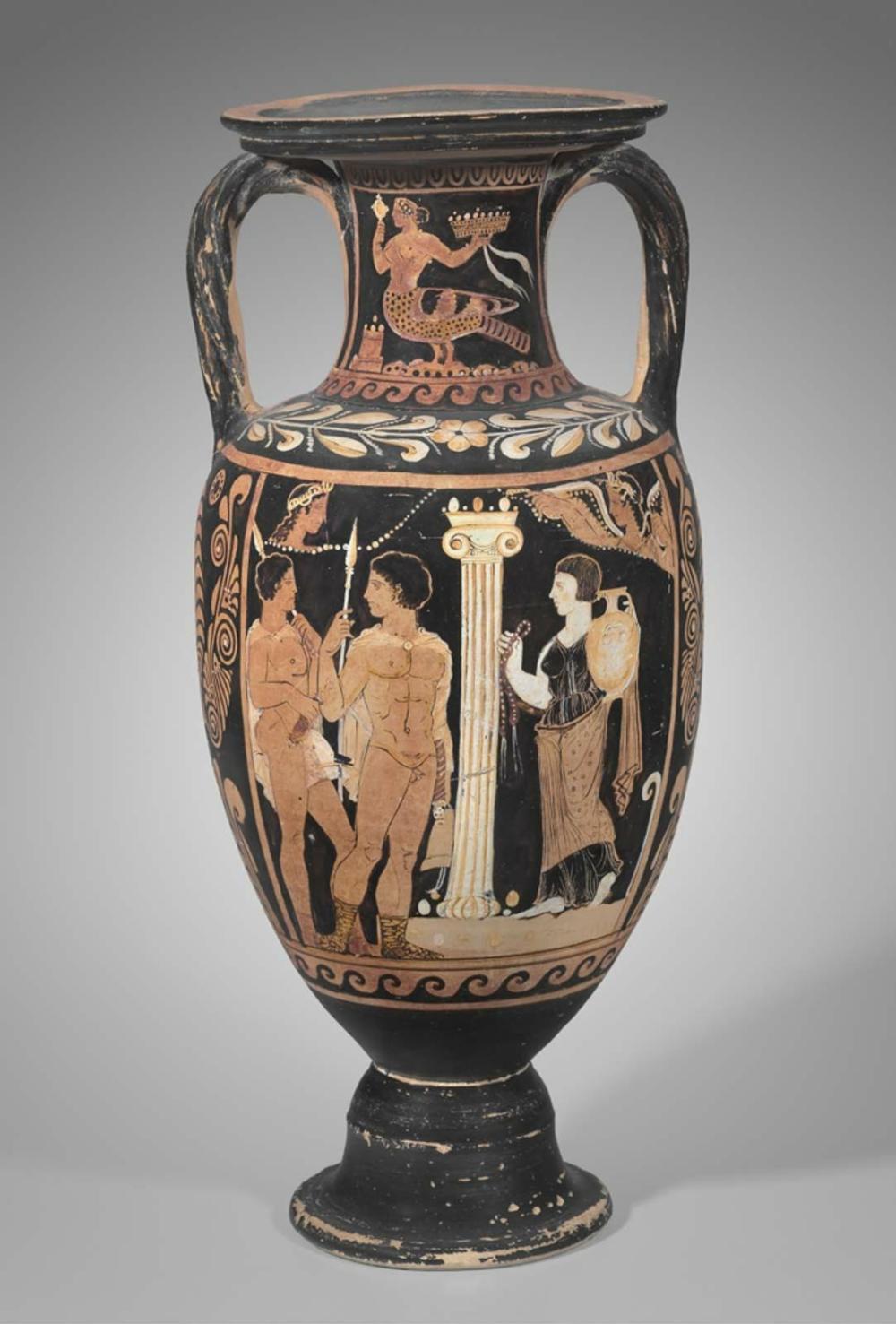
Circle of the Brooklyn-Budapest Painter: Lucanian amphora - Orestes and Elektra at the Tomb of Agamemnon, Greek, c. 380-360 BCE
-doesn’t align with the script of the actual play itself
-Elektra (in play) doesn’t sit contemplatively like she does in the vase imagery

Asteas: Paestan neck-amphora - Death of Klytaimestra, Greek, c. 340 BCE
-pleading for Orestes not to kill her
-Pulls out a shoulder pin, exposing the breast
alludes to the violence that will happen
also a reminder that 'this is the breast that fed you’

Eumenides Painter: Apulian red-figure bell-krater - Purification of Orestes at Delphi, Greek, c. 380-360 BCE
-Animal sacrifice by Apollo, over Orestes to begin his cleansing
-Orestes (seated) holding the murder weapon he used to kill Klytaimestra
-Funes depicted as a beautiful woman (wears a bonnet and chest is exposed by a crisscrossed garment around the torso)
associated with the Underworld
-Oracle tells Orestes to go to Athens for trial (equal votes for innocent/guilty)
-Athena intervenes and breaks the tie in favor of Orestes and his innocence
-Athena makes the Funes her guardians to appease them after the trial

Ilioupersis Painter: Apulian volute-krater - Orestes and Iphigenia at Tauris, Greek, c. 370-360 BCE
-Iphigenia goes to the sacrifice willingly, and is rescued at the last minute
-Athena whisks her away and makes her a priestess
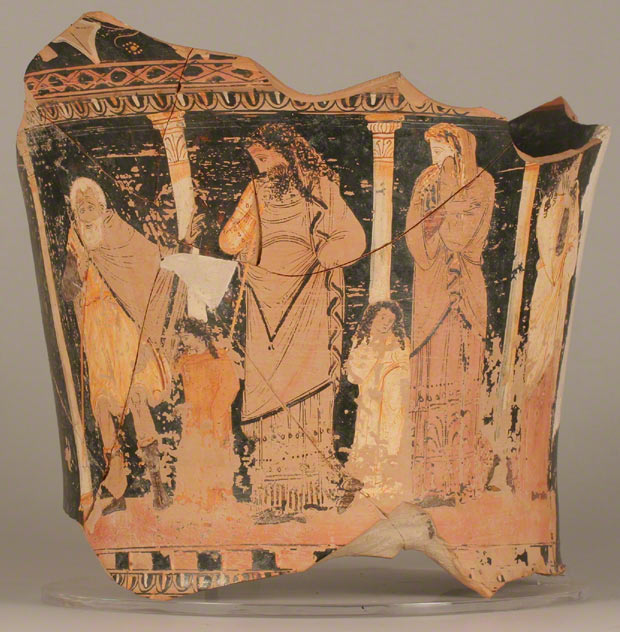
Capodarso Painter: Sicilian calyx-krater Oedipus and his family with the Corinthian messenger, Greek, c. 330s BCE
-Stage performance of Oedipus Rex
no masks
generic figure (frontal pose, likely the messenger)

Olympia, Temple of Zeus: West Pediment - Centauromachy, Greek, c. 470-457 BCE

Pergamon: Great Altar of Zeus, Greek, c. 160 BCE
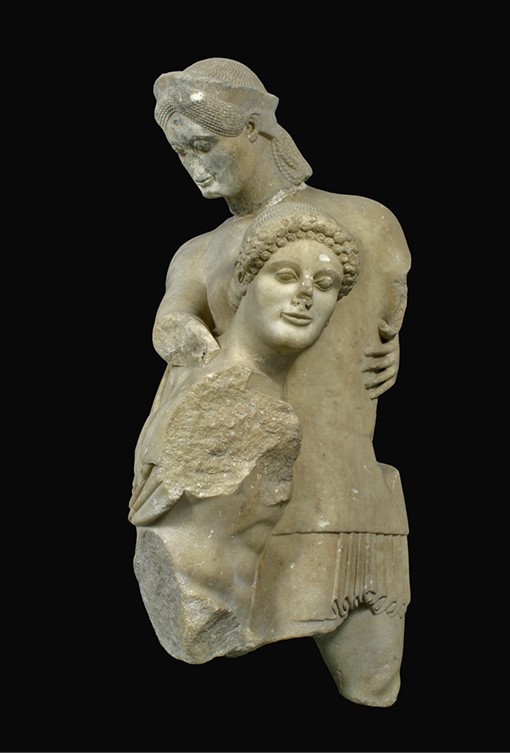
Eretria, Temple of Apollo: Theseus and Antiope, Greek, c. 510-500 BCE
-date is debated and affects story and myth connected to the imagery
-Theseus spun as a proto-democratic leader
does a lot of “good” deeds and is heralded as a hero and good guy
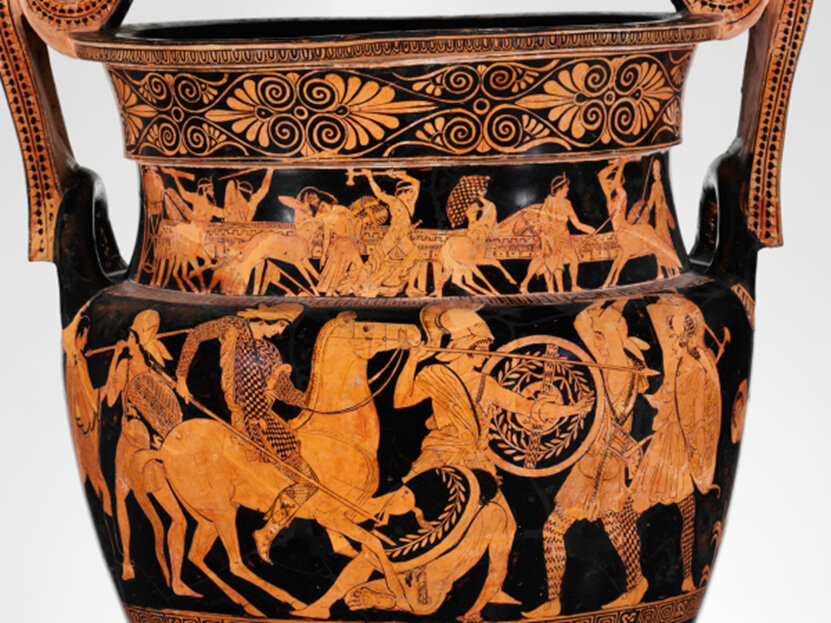
Painter of the Woolly Satyrs: Attic red-figure volute-krater - Amazonomachy; Centauromachy, Greek, c. 460-450 BCE
-staggered figured, popping out from a rock
-Battle between the Lapis and Centaurs
central figures are triumphant Amazons (either side of the vase)

Kodros Painter: Attic red-figure kylix - Birth of Erichthonios/Legendary kings of Athens, Greek, c. 440-430 BCE
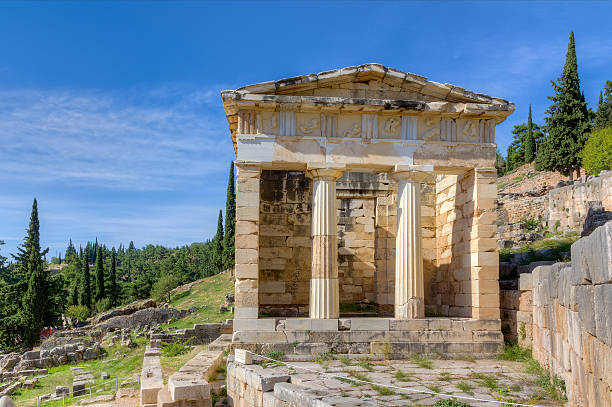
Delphi: The Athenian Treasury, Greek, c. 500 BCE
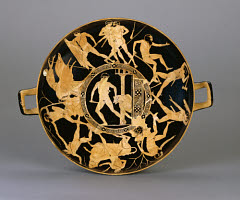
Kodros Painter: Attic red-figure kylix - Deeds of Theseus Cup, Greek, c. 440-430 BCE